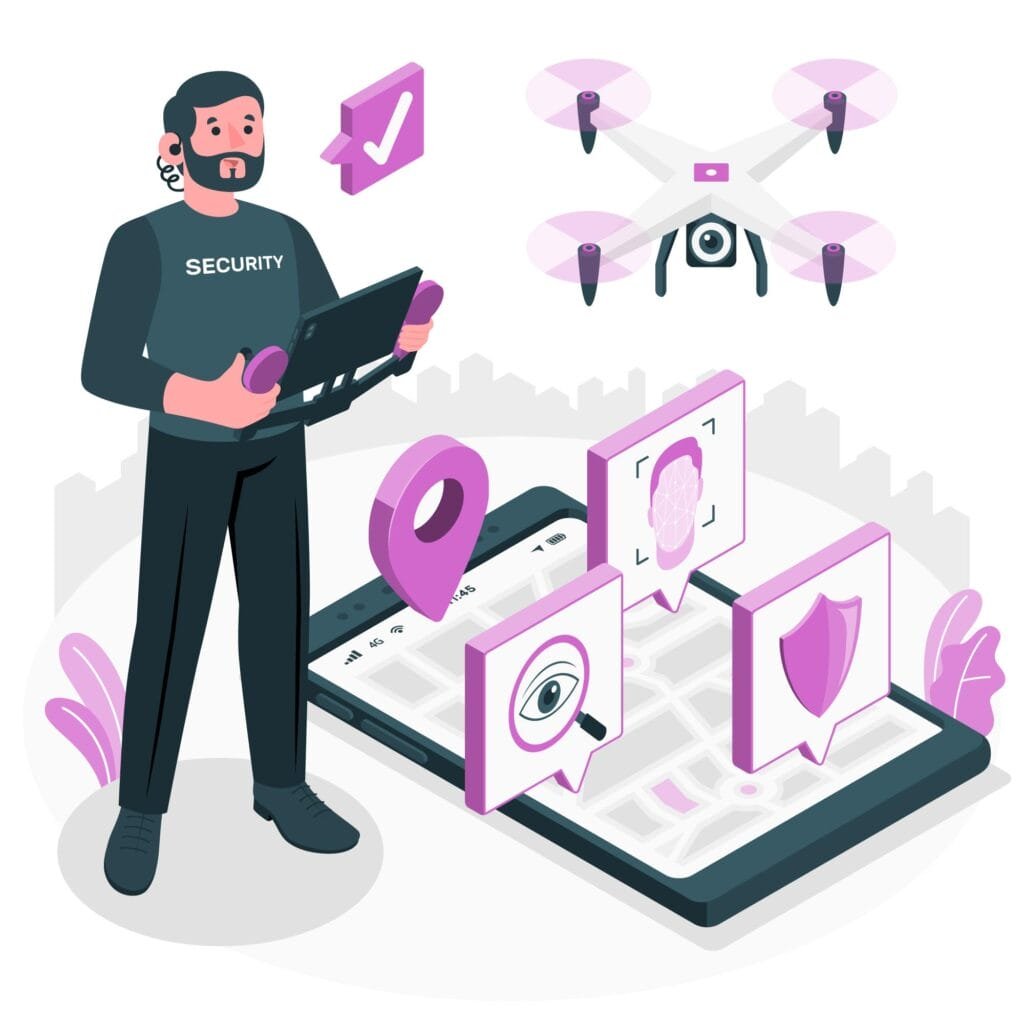Unlocking Fort Knox: The Impact of Cloud Security Software on Enterprises
Introduction to Fort Knox and Cloud Security
Fort Knox, known for its strong defenses, represents the best possible protection and preservation of priceless possessions. Businesses want a similar level of security for their critical data and operations in the current digital environment. In this endeavor, cloud security software serves as a lighthouse, providing a fundamental change in protecting corporate networks from dynamic attacks.
Challenges Faced by Enterprises
Businesses face a multitude of challenges in the quickly changing digital landscape that threaten the security and integrity of their operations. These difficulties result from the complexity of contemporary technology developments and the constantly growing cyberspace.
Security Concerns in the Digital Era
Unprecedented connection and accessibility brought about by the digital era have made it possible for enterprises to prosper in a globalized setting. However, the vulnerabilities that businesses face are also made more apparent by this interconnection. Cyber dangers are prevalent and come in a variety of forms, from sophisticated malware to social engineering strategies meant to take advantage of weaknesses in human behavior within an organization.
Specific Challenges Addressed by Cloud Security Software
Conventional security methods frequently find it difficult to keep up with the way cyber threats are changing. Businesses struggle with maintaining operational continuity in the face of possible disruptions, protecting against advanced persistent attacks, and securing sensitive data. In response to these difficulties, cloud security software has emerged, providing creative fixes intended to allay these particular worries.
Data Breaches and Vulnerabilities
Enterprises are exposed to a considerable risk of financial losses, harm to their brand, and legal consequences in the event of a data breach. Enterprises continue to prioritize properly addressing the major risk of data susceptibility to unwanted access or manipulation.
Ransomware and Malicious Attacks
Business continuity is seriously threatened by the rise of ransomware attacks, in which malevolent parties encrypt important data and demand a fee to unlock it. To prevent operational disruptions and financial losses, enterprises must be vigilant in identifying, preventing, and managing such assaults.
Compliance and Regulatory Standards
For businesses in a variety of industries, navigating the complex web of regulatory standards and compliance obligations poses a significant challenge. A comprehensive security framework that is flexible enough to maintain strong security measures is necessary for ensuring adherence to these criteria.
Understanding Fort Knox-Like Security

Renowned for its strong defenses and impenetrable fortifications, Fort Knox is a well-known representation of unbreakable security. Gaining an understanding of the features that characterize this degree of security can help you better understand how cloud security software reflects and aligns with these features.
Characteristics of Fort Knox Security
- Layered Protection: Many security layers surround Fort Knox, each acting as a buffer against any attacks. Similar to this, cloud security software uses intrusion detection, access controls, and encryption to build a strong barrier around sensitive information and operations. This is known as the layered defense principle.
- Rigorous Access Controls: There are severe procedures controlling entry and authorization, making access to Fort Knox extremely restricted. This is mirrored by cloud security software, which establishes strong user management protocols, authorization processes, and access restrictions to ensure that only authorized individuals have access to vital systems and data.
- Constant Vigilance: In order to detect and prevent any possible threats, Fort Knox employs security officers and monitoring technology to maintain a posture of perpetual alertness. A similar strategy is used by cloud security software, which continuously monitors network activity, examines anomalies, and reacts quickly to security problems to reduce risks in advance.
Alignment of Cloud Security with Fort Knox Attributes
By including these essential features in its design, cloud security software captures the spirit of security similar to Fort Knox. Data is protected from unwanted access via encryption techniques, which build layers of defense similar to Fort Knox’s walls. Strict authentication procedures and access controls create a virtual wall that only enables authorized organizations to access private data.
Furthermore, cloud security software’s real-time threat detection and ongoing monitoring features mimic Fort Knox’s watchful eye. Cloud security software seeks to protect the confidentiality and integrity of business data and processes via proactive detection of potential attacks and ongoing monitoring.
Essentially, although Fort Knox continues to be an actual proof of unbreakable security, cloud security software uses its concepts and features to strengthen the digital domain, giving businesses a similar degree of defense against the always-changing field of cyberattacks.
Benefits of Cloud Security Software
The concept of enterprise security is redefined by the multitude of benefits that come with the deployment of cloud security software. These benefits are multifaceted and are changing how firms protect their confidential information and improve their operations.
Enhanced Data Protection
Strong encryption techniques are integrated into cloud security software to protect data while it’s in transit and at rest. Sensitive data is protected from unwanted access using sophisticated encryption protocols, ensuring its confidentiality and integrity.
Scalability and Flexibility
Scalability is one of the main characteristics of cloud security software. Businesses do not need to make major infrastructure changes to dynamically scale their security measures in response to changing needs. This adaptability enables smooth adjustment to varying workloads and changing threats.
Cost-effectiveness
Traditional security procedures are frequently more economically advantageous when utilizing cloud-based security solutions. Cloud security software minimizes upfront expenses and maximizes resource utilization by doing away with the requirement for significant on-premises equipment and providing subscription-based models.
Streamlined Management
Cloud security software is characterized by centralized management and administration, which makes it easier to oversee security measures throughout the entire organization. Effective security policy enforcement, analysis, and monitoring are made possible by unified interfaces and centralized dashboards.
Rapid Deployment and Updates
Cloud-based security solutions make it easier to implement and update quickly, so businesses can always be up to date with the newest security features and fixes. The prompt mitigation of vulnerabilities through the rapid deployment of updates and patches improves the overall security posture.
Impact on Enterprise Operations

The operational landscape of organizations is radically transformed by the integration of cloud security software, which goes beyond simple defense against cyber attacks. The influence is multifaceted, affecting several aspects of business operations and ensuring a safe and robust environment.
Improved Efficiency and Productivity
Strong cloud security measures simplify processes and provide an atmosphere that is favorable to increased productivity and efficiency. Employees may concentrate on key responsibilities without constantly worrying about data breaches or system compromises thanks to the mitigation of security risks and the reduction of disruptions brought about by cyber threats.
Mitigating Risks and Vulnerabilities
In order to reduce risks and vulnerabilities that can jeopardize business operations, cloud security software is essential. The enterprise’s resilience against various cyber threats is boosted by proactive threat detection, real-time monitoring, and quick incident response methods, which ensure continuous business operations.
Regulatory Compliance and Risk Management
Businesses in regulated sectors are subject to strict compliance requirements. Through the integration of compliance capabilities and the facilitation of risk management methods that comply with industry-specific standards, cloud security software helps users navigate this complicated landscape.
Empowering Innovation and Agility
The adoption of cloud-based security solutions creates an atmosphere that is favorable to creativity and adaptability. Businesses can take advantage of flexible and scalable security solutions, which allow them to quickly adjust to changing needs without sacrificing security.
Strengthening Customer Trust
Building a strong security posture on cloud security software promotes stakeholder and consumer trust. Stronger relationships with partners and consumers are created when an organization demonstrates a commitment to protecting sensitive data.
Enabling Remote Work and Collaboration
In the modern, dynamic workplace, remote work and teamwork are essential. Cloud security software enables safe remote access to data and systems, allowing geographically scattered teams to collaborate easily without sacrificing data security.
Cost Savings and Resource Optimization
The impact of cloud security software is defined by cost reductions and efficient resource usage. Enterprises can achieve cost advantages without compromising security by optimizing resource allocation and removing the need for substantial on-premises infrastructure.
Integration of Cloud Security Software
A company must adopt a strategic strategy when implementing cloud security software to ensure smooth integration and maximum exploitation of its functionalities. To fully utilize cloud-based security measures, the integration process entails resolving obstacles, coming up with implementation plans, and getting beyond roadblocks.
Implementation Strategies

- Comprehensive Assessment: The basis for a successful integration is a detailed evaluation of the infrastructure, organizational requirements, and security frameworks that are currently in place. The selection and customization of cloud security solutions are guided by the identification of vulnerabilities, compliance requirements, and specific security goals.
- Tailored Solution Selection: It is essential to select the best cloud security solution based on the particular needs of the business. Scalability, compatibility with current systems, compliance features, and vendor dependability are all important considerations during the decision process.
- Phased Implementation Approach: A systematic and regulated integration procedure is made possible by the phased implementation of cloud security measures. It is possible to test, improve, and progressively roll out security measures throughout the entire organization by starting with less important departments or systems.
Overcoming Adoption Challenges
- User Training and Change Management: It is essential to train staff members on the new security procedures and instruments. Adherence to new security practices is encouraged via training sessions, workshops, and clear communication about the advantages and appropriate use of cloud security software.
- Data Migration and Interoperability: Planning is essential when moving data and systems to a cloud-based security environment to ensure smooth interoperability and little disturbance. Risks related to the migration process are reduced by data transfer strategies, compatibility tests, and backup procedures.
- Vendor Support and Collaboration: Integration goes more smoothly when there is close collaboration with the selected vendor or service provider. The success of integration activities is increased by establishing clear communication lines, asking vendors for assistance with implementation issues, and utilizing their knowledge.
Ensuring Sustainable Integration
- Continuous Monitoring and Evaluation: It is crucial to continuously monitor and assess the integrated security measures after they are put into place. Proactive gap discovery and timely remedy are made possible by regular assessments, security audits, and performance reviews.
- Adaptation and Iterative Improvement: Because cyber threats are dynamic, security must be implemented iteratively. Sustained efficacy is ensured by the security framework’s continuous enhancements, updates to security standards, and flexibility to respond to new threats.
Future Trends in Cloud Security
The ever-evolving needs of companies, combined with growing risks and technical breakthroughs, are driving changes in the cloud security landscape. Forecasting future trends helps shape the path of enterprise security frameworks by offering insights into the direction of cloud security.
Evolving Technologies and Innovations
- AI-driven Threat Detection: A new age in threat detection is marked by the incorporation of machine learning (ML) and artificial intelligence (AI) into cloud security software. Algorithms driven by artificial intelligence (AI) examine huge amounts of data, finding trends and abnormalities to quickly identify and neutralize threats.
- Blockchain Integration: More research is being done to better understand how blockchain technology’s inherent security properties might improve cloud security. Data integrity and trust in cloud environments are enhanced by immutable ledgers, decentralized authentication, and encrypted data storage through blockchain integration.
- Zero Trust Security Models: Models of zero-trust security, which are based on the idea of never trusting and always confirming, are becoming more and more popular. Continual identity, device, and data access verification is the main goal of this strategy, regardless of whether the components are located inside or outside the organizational perimeter.
Predictions for the Future of Enterprise Security
- Edge Computing Security: Securing devices and data at the edge becomes critical as edge computing grows. It is anticipated that cloud security solutions of the future will include edge-specific features that ensure strong protection at the network’s edge.
- Quantum Computing Threats and Countermeasures: With the development of quantum computing capabilities, the danger landscape changes. To withstand potential quantum-based cyber threats, future cloud security solutions need to take quantum-resistant encryption and algorithms into consideration.
- Unified Security Platforms: Simplifying management and improving overall security posture are achieved through the integration of diverse security tools and capabilities into unified platforms. The unification of different security systems into coherent, unified platforms is a key component of future trends.
Conclusion
Cloud security software transforms enterprise asset protection, likened to the keys to Fort Knox’s unbreakable fortress. Because of its many advantages and constantly improving capabilities, it is a key component in defending against contemporary cyber threats.
FAQs
Is cloud security software suitable for all types of enterprises?
Cloud security software can be tailored to meet the needs of various enterprises, irrespective of their size or industry. It offers scalable solutions adaptable to different organizational requirements.
How does cloud security software ensure compliance with regulations?
Compliance features integrated into cloud security software facilitate adherence to industry-specific regulations by implementing necessary security protocols and data management practices.
Can cloud security software prevent all types of cyber threats?
While robust, no security solution can guarantee absolute immunity. However, cloud security software significantly reduces the risk by employing advanced threat detection and mitigation measures.
What challenges might enterprises face during the integration of cloud security software?
Challenges such as data migration, compatibility issues, and user training are common during integration. Addressing these challenges through proper planning and support is crucial.
What future advancements can be expected in cloud security software?
The future holds promising advancements, including AI-driven threat detection, blockchain integration, and enhanced predictive analytics, further fortifying security measures for enterprises






